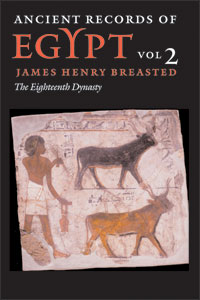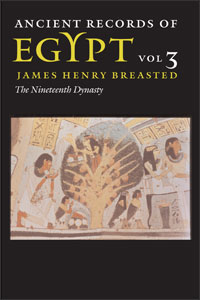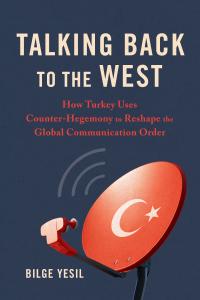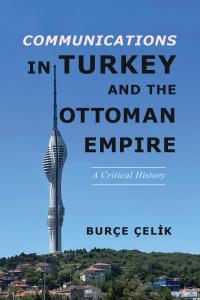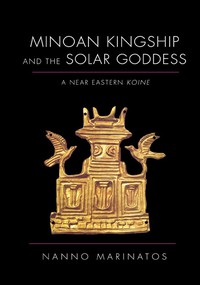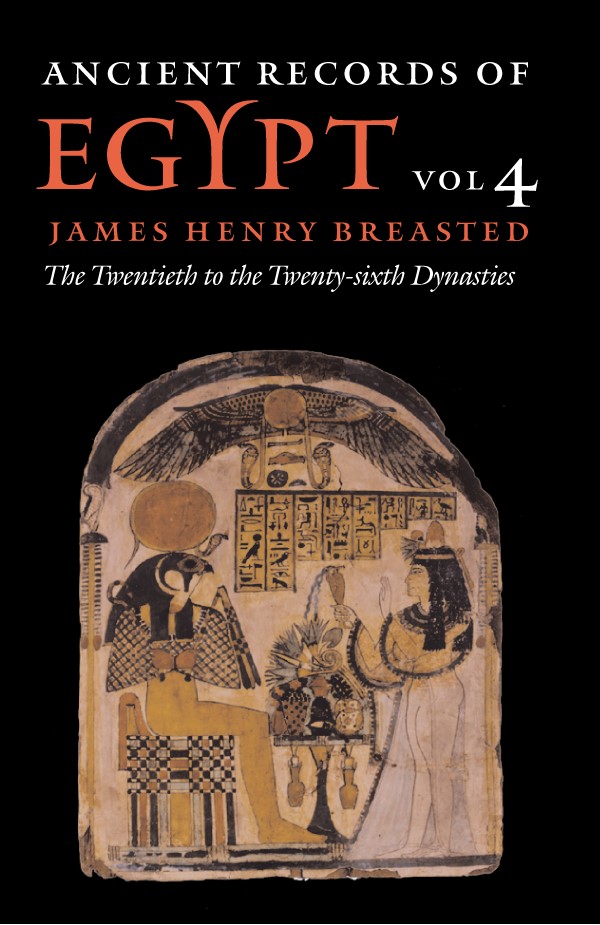
Ancient Records of Egypt
About the Book
With volume 4 of Ancient Records of Egypt, James Henry Breasted brings us to the end of the self-governed era of ancient Egyptian civilization. Chief among the documents contained in this volume are the inscriptions from the Medinet Habu Temple, one of the most completely preserved temples of Egypt, and the great Papyrus Harris, the largest (133 feet long) and most sumptuous papyrus extant, 95 percent of which Breasted was the first to study closely. Together these documents present a detailed record of the reign and benefactions of Ramesses III, whose reign lasted more than thirty years.Volume 4 includes intriguing records of the harem conspiracy and legal documents that indicate the extent of robberies of royal tombs. Records of the Nile levels at Karnak provide important chronological landmarks, while the Stela of Piye (Piankhi), which documents the Nubian kingdom already in existence as a full-fledged power, provides information on the internal political climate of Egypt during a time when no aggressive monarch controlled the whole country. Breasted also notes where these ancient Egyptian records intersect with accounts of the same events from other sources, such as the mutiny of Psamtik I's troops as inscribed on the alabaster statue of Nesuhor and as narrated by Herodotus.
In effect, Ancient Records of Egypt offers a valuable dual record. On the one hand, Breasted presents the events and personages of ancient Egypt as recorded in the documents. On the other hand, he presents a history of the documents themselves. Fragmentary or partially destroyed, carved on temple and tomb walls or written on fragile scrolls of leather or papyrus, even inscribed on the coffins and temple linens of the royal and priestly mummy wrappings, these records offer an irreplaceable primary source on a fascinating civilization.
Reviews
"In 1906, Breasted, America's first noted Egyptologist, published this series in which he presents a history of the golden age of Egypt gleaned from its records, many of which he was the first scholar to be allowed to study. This edition, the first in paperback, offers a new introduction by historian Peter A. Piccione, who places Breasted's work in a modern context. A solid series for academic libraries and priced so that public libraries also can afford them." -- "Classic Returns," Library Journal"The republication of this seminal work after nearly a century, by the University of Illinois, is as welcome as it is unexpected." -- Josef Wegner, Odyssey
